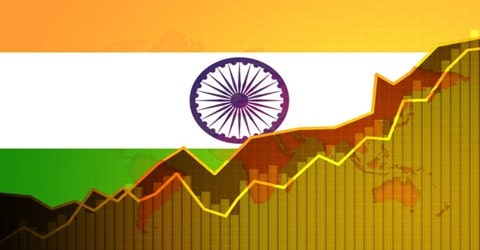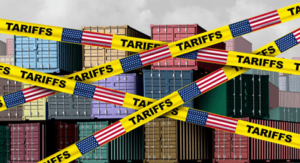
Can India Become a Developed Economy by Mid-Century?
India become a developed economy by mid-century is an ambitious vision, one that Prime Minister Narendra Modi aims to achieve by 2047, marking a century since India’s independence. With the transformative potential for both India and the global economy, this target has fueled nationwide optimism.
However, achieving it is far from straightforward. For India to meet this milestone, its per capita income must significantly outpace China’s growth rate, and critical areas like labor reforms, educational improvements, trade liberalization, and regulatory overhaul must see urgent action.
India Become a Developed Economy
The journey to high-income status will test India’s resilience, innovation, and commitment to sustainable growth. However, India must confront complex challenges to achieve sustained growth, close income gaps, and strengthen economic fundamentals.
Table of Contents
1. Driving High and Sustained Economic Growth
India’s growth rate has been robust over recent decades, averaging between 6% and 8% annually, but sustaining this pace through the next two decades will be difficult. For India to reach developed status by 2047 and achieve its goal of having India become a developed economy, its per capita income growth would need to exceed China’s by around 3.5 percentage points annually.
Read More: Indian Economic Prospects by 2027.
While possible, this pace requires resilient growth across sectors like manufacturing, services, and agriculture. Given the recent economic deceleration, India’s economy needs renewed vigor and investment to ensure a growth trajectory that consistently outpaces inflation and population increases.
Moreover, urbanization plays a critical role in economic transformation. In India, the shift from rural to urban employment has been relatively slow, leading to entrenched inequalities and slowing productivity growth. Accelerated urbanization, coupled with effective policies that support urban infrastructure and services, could be key to maintaining the high growth necessary to meet the 2047 target.
2. Improving the Education System
For India to build a skilled and productive labor force and progress toward becoming a developed economy, its education system requires substantial improvements. While school enrollment rates have increased, quality remains a significant issue, particularly at primary and secondary levels.
Over half of India’s fifth-grade students struggle to read at a second-grade level, indicating a major gap in foundational education. To harness the demographic dividend, India must raise educational standards, align curricula with global industry demands, and invest in digital and technical skills from a young age.
Investment in vocational training, apprenticeships, and adult education could also play a pivotal role. With targeted reforms, India can better equip its workforce for high-productivity sectors, encouraging innovation in emerging fields like technology and digital services, paving the way for India to become a developed economy.
Read More: China’s Pension Crisis, A New Challenge
3. Labor Market Reforms for Economic Flexibility
India’s restrictive labor laws present significant challenges to industrial growth. Current regulations make it difficult for businesses to hire and fire workers, and strict overtime pay rules and employer obligations increase the cost of labor. This rigidity discourages businesses from hiring unskilled workers, leading employers to rely on capital-intensive processes that limit job creation in labor-intensive sectors.
To help India become a developed economy, reforming labor laws to offer greater flexibility could stimulate job growth, encourage manufacturing, and help transition a significant portion of the labor force from low-productivity agricultural jobs to more productive urban industries.
Simplified hiring processes, protection for workers, and incentives for companies to invest in training programs could together create a labor market that better meets the demands of a dynamic economy.
Read More: The IMF Surcharge Policy Must Be End
4. Boosting Manufacturing and Exports
India’s “Make in India” initiative was designed to expand domestic manufacturing and reduce import reliance, but this protectionist approach has led to increased tariffs and import barriers. While some domestic industries have benefited, overall growth potential has been hindered by limited trade openness.
Historical evidence suggests that a robust export-oriented strategy is key to rapid development, as demonstrated by countries like South Korea and China.
For India to become a developed economy, creating an export-friendly policy environment is essential. By tapping into global markets, India can attract foreign investment and build globally competitive industries. Encouraging industries that have a comparative advantage, such as textiles, pharmaceuticals, and information technology, could accelerate India’s economic ascent.
Read More: The Impact of Chinese Manufacturing Decline
5. Strengthening Infrastructure and Digitalization
World-class infrastructure is foundational to economic development. India’s biometric identification system, Aadhaar, has streamlined public services, showcasing how technology can improve efficiency.
However, more substantial investment in transport, logistics, energy, and communication infrastructure is essential for supporting sustained growth, enabling India to become a developed economy.
Enhanced infrastructure can also facilitate the growth of small and medium-sized enterprises (SMEs), which play a vital role in job creation. By supporting digitalization and better connectivity, India can make it easier for businesses to scale up and access markets more efficiently. Moreover, greater digital infrastructure could allow for more remote working opportunities, facilitating urban-rural balance and making employment more accessible across India.
6. Reducing Bureaucratic Red Tape and Regulatory Barriers
India’s bureaucratic processes and licensing requirements can hamper economic activity and discourage foreign investment. Excessive regulatory red tape has been a major constraint on business growth and innovation. While reforms have made some headway, simplifying regulations and reducing bureaucratic hurdles are essential to maintain momentum if India aims to become a developed economy.
Efforts to streamline administrative procedures, implement transparent regulations, and make it easier for businesses to obtain licenses could significantly improve India’s economic landscape. Simplifying these processes could also boost foreign investment, which remains crucial for the transfer of technology and capital needed to drive industrial growth.
Read More: The Geopolitics of Olympic Medals (Paris Olympic Games, 2024)
7. Addressing Socioeconomic Inequality and Poverty
Despite India’s considerable economic growth, poverty and inequality remain persistent issues. India is home to 167 billionaires, yet more than 129 million people still live below the poverty line. Income disparities are further exacerbated by unequal access to quality education, healthcare, and employment opportunities.
To build a more inclusive economy and help India become a developed economy, the country must implement policies aimed at reducing inequality, such as progressive taxation, improved access to quality healthcare, and affordable education. Rural development initiatives, investment in affordable housing, and programs to support low-income families could help create a more equitable society. Reducing inequality not only fosters social cohesion but also broadens the base of consumers, fueling economic growth.
Bottom line
India’s ambition to reach developed-country status by 2047 is undoubtedly bold. With strategic reforms in labor, education, trade, and infrastructure, coupled with efforts to reduce inequality and bureaucratic red tape, India has the potential to transform into a high-income economy. However, this journey demands sustained political will, resilient policy implementation, and adaptability in the face of economic challenges.
If India succeeds in its mission to become a developed economy, it will not only elevate its own citizens but also emerge as a major player on the global stage, reshaping the economic and geopolitical landscape of the 21st century. Conversely, if these structural issues remain unresolved, India risks falling short of this milestone and may remain a middle-income country. The path ahead is both challenging and promising, and with the right approach, India can truly chart a course toward becoming a developed economy by mid-century.





